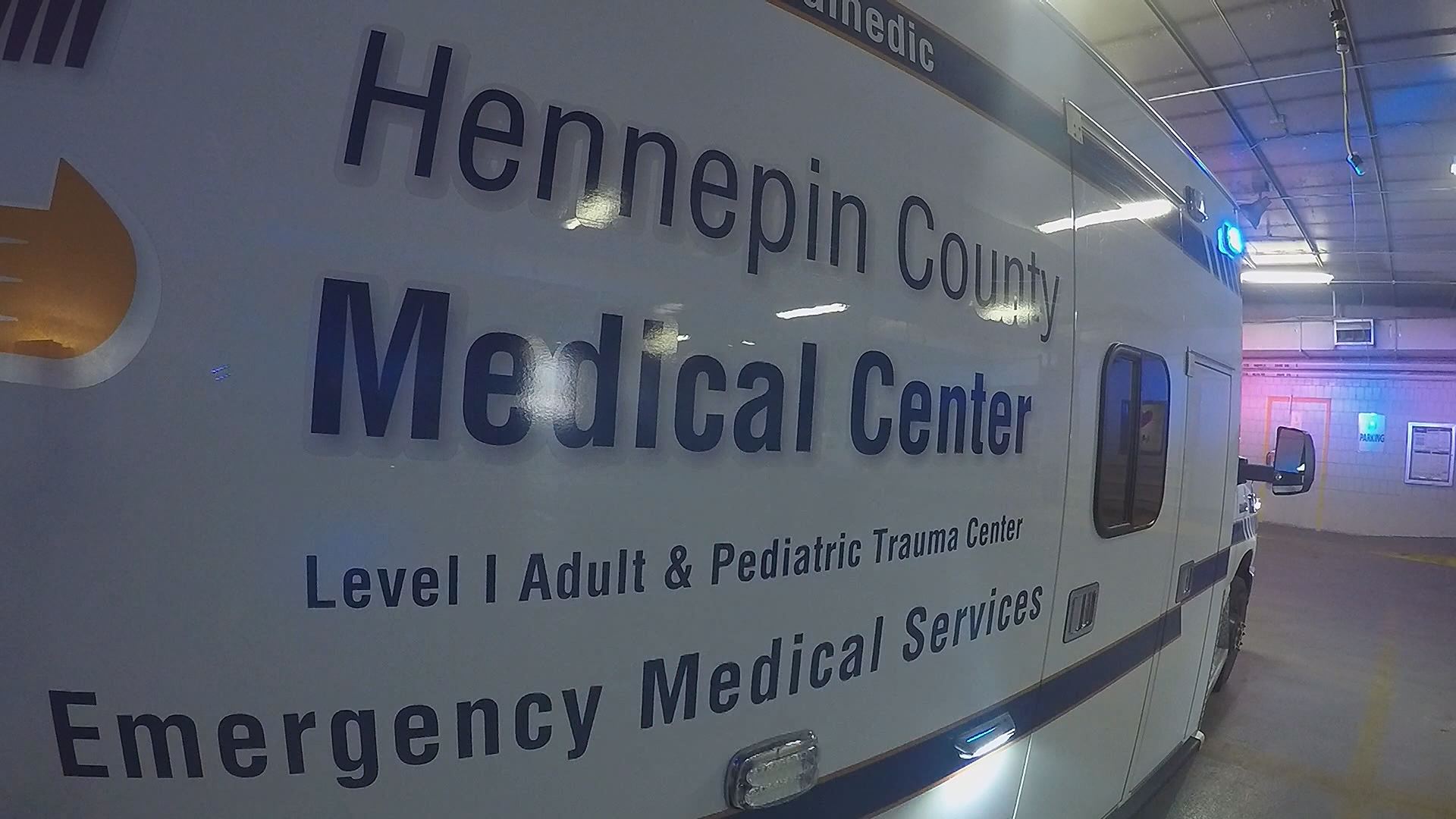MINNEAPOLIS - Ask any former or current paramedic or EMT about the job and you may get a response you were not expecting.
Many have stories of being slapped, punched, and kicked, and maybe worse. Violence against paramedics and EMTs is happening more often than people realize, they say.
"Anecdotally we're seeing more of it,” said Scott Tomek, a quality, safety and risk manager for Allina Health who also is a paramedic.
The latest incident happened in January when a patient allegedly assaulted a paramedic in the ambulance while the other was driving on the highway in Lino Lakes.
"Violence is like the dirty little secret in medicine,” said national advocate Tip Teistort.

Teitsort, a former cop and paramedic, runs DT4EMS, which trains paramedics on how to stay safe. He believes the number of paramedic assaults has not increased, but that reporting is getting better.
He believes, however, not enough paramedics report assaults and that there needs to be more awareness about the violence from both the public and medics.
"It really has become part of the culture that a violent attack on an EMS provider is a rite of passage or part of the job,” he said.
One recent study reported more than 40 percent of paramedics said they were physically assaulted nationwide.

"But still the reporting is very, very low right now,” said Tomek.
He says assaults are still underreported which makes it difficult to know how to deal with the issue without accurate numbers.
"They are occurring and we have to better prepare,” he said.
Tony Brandt trains paramedics at Hennepin EMS. He says reports of assaults have gone down over the last few years for Hennepin EMS workers because of an emphasis on training. But he believes more can be done overall.
"Not many agencies throughout the state of Minnesota do a lot of safety training,” said Brandt. "Very few of them cover the topics of how to recognize someone who's going to become violent.”

"We're still much more likely to sustain an injury working on the highway which is the most dangerous thing we do,” added Mike Trullinger, deputy chief for Hennepin EMS.
Trullinger says one assault is too many, which is why he says the county made it easier for paramedics to wear body armor.
Still, most agree the issue of violence against paramedics can longer be ignored.
"I think we're at a point in time that discussion needs to start,” said Tomek.


